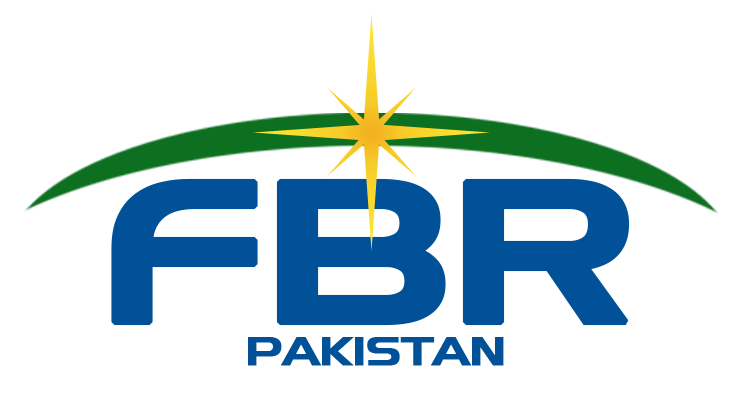
Pakistan Federal Budget 2025–26: A Strategic Shift Toward Growth, Reform & Digital Transformation
On June 10, 2025, the Government of Pakistan unveiled its highly anticipated Federal Budget for FY 2025–26 — a comprehensive Rs. 17.6 trillion roadmap aimed at reviving economic growth, expanding the tax net, and embracing digital modernization. Developed with guidance from the International Monetary Fund (IMF), the budget strikes a delicate balance between offering relief to citizens and ensuring fiscal discipline.
Here’s a deep dive into the key highlights and reforms that are poised to shape Pakistan’s economic future.
Ambitious Economic Outlook
The budget sets the tone for a more confident and resilient economy:
GDP Growth Target: 4.2% for FY26 (up from 2.7% in FY25), indicating an economic recovery.
Tax-to-GDP Ratio: Aiming to improve from 10% to 14%, lessening reliance on foreign loans.
Revenue Targets:
FBR Collection: Rs. 14.13 trillion (up from Rs. 12.9 trillion in FY25).
Non-Tax Revenue: Rs. 5.15 trillion to strengthen internal financial resources.
Key Tax Reforms
To expand the tax base and bring informal sectors into the fold, the government introduced wide-ranging tax reforms:
1. New Tax Measures
Over Rs. 623 billion in new taxes aimed at digital transactions, freelancing, and agriculture.
2. Crackdown on Non-Filers
Non-filers restricted from purchasing vehicles, properties, and securities.
Limited banking access to encourage tax compliance.
3. E-Commerce & Digital Tax
A 0.25%–2% final withholding tax on digital transactions via e-commerce platforms.
Collection by banks and courier services to formalize online trade.
4. Real Estate Tax Adjustments
Advance Tax on Purchases:
Filers: Reduced to 1.5%–2.5% (previously 3%–4%).
Non-Filers: Increased sharply to 18.5%.
On Sales: Up to 11.5% for non-filers.
5. Capital Gains & Dividends
Higher tax on profits from shares, real estate, and mutual funds (up to 25%).
Support for the Middle Class
The salaried class receives significant relief through revised tax slabs and income support:
Income Tax Cuts:
Up to Rs. 600,000: No tax.
Rs. 600,001–1.2 million: Tax reduced to 1% (previously 5%).
Rs. 1.2–2.2 million: Tax reduced to 11% (from 15%).
Rs. 2.2–3.2 million: Tax reduced to 23% (from 25%).
High-Income Surcharge: Cut from 10% to 9% for annual incomes above Rs. 10 million.
Home Loan Incentives: Reinstated tax credit for interest on home loans (up to 2,500 sq. ft. houses or 2,000 sq. ft. flats).
Salaries & Pensions:
10% increase in government salaries.
7% pension hike to offset inflation.
Academic Tax Relief: A 25% tax rebate restored for full-time teachers and researchers (applicable from July 1, 2022).
Sectoral Spending & Fiscal Management
Defense & Security
Rs. 2.55 trillion allocated (20% increase), reflecting strategic priorities.
Public Development
Rs. 1 trillion allocated for the Public Sector Development Program (PSDP) to fund infrastructure and generate employment.
Debt Servicing
Rs. 8.2 trillion allocated to interest payments — nearly 47% of total expenditure.
Monetary Savings
Rs. 1.3 trillion expected in savings from reduced State Bank policy rates.
Digital and Technological Advancement
The government has placed a strong emphasis on technology to improve governance:
AI for Taxation: AI tools introduced to enhance tax tracking and ensure transparency.
Digital Transaction Recognition: Gifts, loans, and investments made digitally now officially recognized.
Cargo Tracking: A new real-time system to monitor goods in transit, aiming to prevent tax evasion.
SEZ & STZ Incentives: Sales tax exemptions for Special Economic and Technology Zones capped until 2035 or 10 years, whichever is earlier.
Sales Tax & Compliance Reforms
E-Commerce Regulation
Sales tax on online goods collected by payment processors and delivery services.
Withdrawal of Exemptions
Solar Panels: Import and supply exemptions withdrawn.
Tribal Areas: Sales tax exemption being phased out by FY29 (from 10% to 16%).
Imported Goods: Taxed at 130% of customs value to improve revenue accuracy.
Auto Sector
Sales tax on locally manufactured cars (up to 850cc) raised to 18%.
Other Tax & Compliance Adjustments
Pension Tax: 5% tax on retirement benefits exceeding Rs. 10 million for individuals under 70.
Withholding Tax Increases:
Service sector payments: Increased to 15%.
Profit on debt: Increased to 20% (except government securities).
Cash Transaction Limits:
Disallowance of 50% of expenses for cash sales over Rs. 200,000.
10% of purchases from non-NTN holders to be disallowed.
Tax Relief for Tribal Areas: Income tax exemptions extended until June 30, 2026.
Appeals Reform: Taxpayers can now directly approach the Appellate Tribunal, bypassing the Commissioner (Appeals).
Conclusion:
Reform with Responsibility Pakistan’s FY 2025–26 budget offers a transitional pathway — blending tax relief for the middle class with broader reforms to strengthen the economy. While inflationary pressures and high debt remain concerns, the budget’s focus on modernization, digitization, and inclusive taxation lays the foundation for a resilient, future-ready Pakistan.
As the Rs. 17.6 trillion blueprint begins to unfold, businesses, investors, and citizens alike will watch closely to see how these policies shape the nation’s trajectory.
About Us
TF CMA decided to start this company because we saw that most Pakistani taxpayers were struggling with the burden of paying their taxes. They were spending too much time and money on paying their taxes and making sure they complied with all legal requirements. At taxfiler CMA, we are working hard to make it easier for our customers to comply with all legal requirements and pay their taxes quickly and easily.




